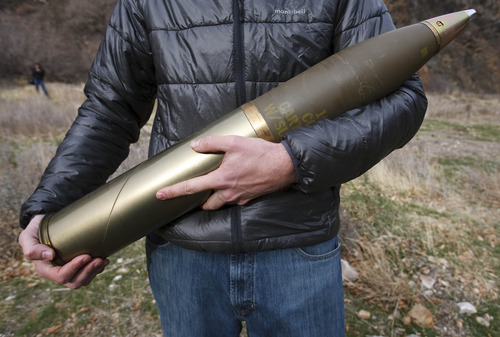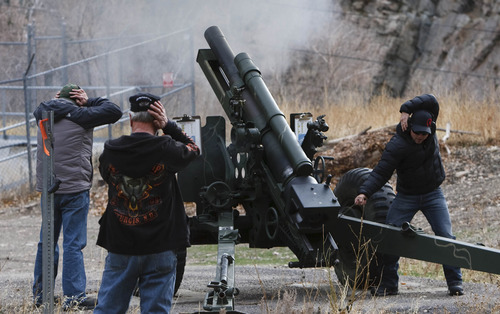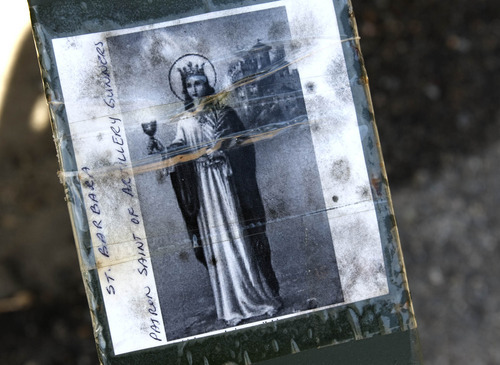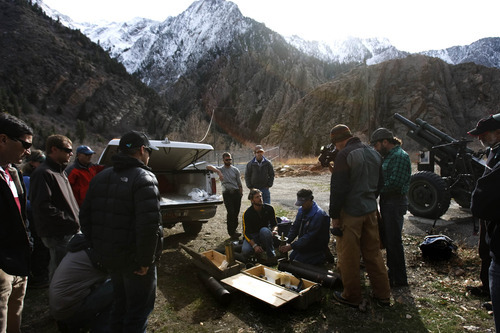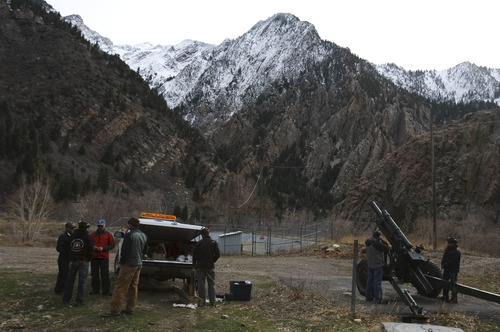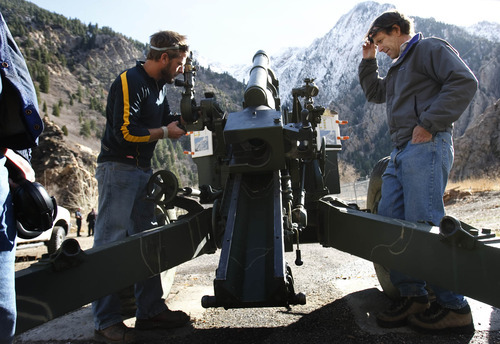This is an archived article that was published on sltrib.com in 2011, and information in the article may be outdated. It is provided only for personal research purposes and may not be reprinted.
It may finally seem like spring in the valleys, but Utah Department of Transportation avalanche-control officials say snow conditions in the Wasatch canyons are in midseason winter form — and residents should expect continuing road closures for artillery firing to knock down avalanches.
They haven't seen anything quite like it since 1983 — when snowmelt flooding turned some Salt Lake County roads into sandbagged rivers. Extra work this year has depleted their ammunition and budget.
Liam Fitzgerald, avalanche forecaster for UDOT, said Little Cottonwood Canyon had the third-most snow on the ground ever on April 30, when the annual snow-measuring season traditionally ends.
He adds that in light snow years, canyon avalanche control ends by mid-April. The longest that it continued was in the flood year of 1983 — when he said conditions were similar to now — when it went into the third week of May.
"It will likely go at least that long this year," Fitzgerald said, offering no firm guess about when it will finally end.
"Snowpack-wise, it is like the middle of avalanche season," he said. "With the amount of snow on the ground, if any significant winter storm rolls through here in the foreseeable future for most of this month, it will require some avalanche-control measures, such as road closures or a closure followed by artillery work."
He added, "The quick warming that follows storms this time of year usually releases heat-related avalanches. So we may get the worst of both worlds."
Heavy snows this year already required more avalanche-control work than usual.
"We have used 142 percent of normal in ammunition" to knock down avalanches, Fitzgerald said. UDOT mostly uses 105 mm howitzer shells "purchased from the Army at no small cost to the taxpayer," Fitzgerald said, along with 105 mm recoilless rifle shells and some explosives dropped from helicopters.
"We have pretty much depleted our supplies," Fitzgerald said. "We would have to make serious expenditures to replace what we have used," noting that the current year budget is usually used to buy ammo for the next year.
Fitzgerald said that in a normal year, the entire Little Cottonwood Canyon is closed on 11 days for avalanche control. So far this year, it has been closed 21 days. "So we are way above normal for road closure and avalanche control," he said. "It has been a tiresome year."
But it has been a good avalanche control year so far in other ways.
"We've had more avalanches, but fewer of them have actually reached the road. Perhaps it is because of the snowpack condition or the work we have been doing," Fitzgerald said. Also, the Hellgate/Mount Superior section of the canyon is usually closed 18 days a year for avalanche control and has been closed only 11 days this year so far.
The Little Cottonwood snowpack was 145 percent of normal at the end of April, he said, noting it was deeper only in 1974 and 1975.
"That means it is deeper now," Fitzgerald said, "than we had in the big-water [and flooding] years in the 1980s."


